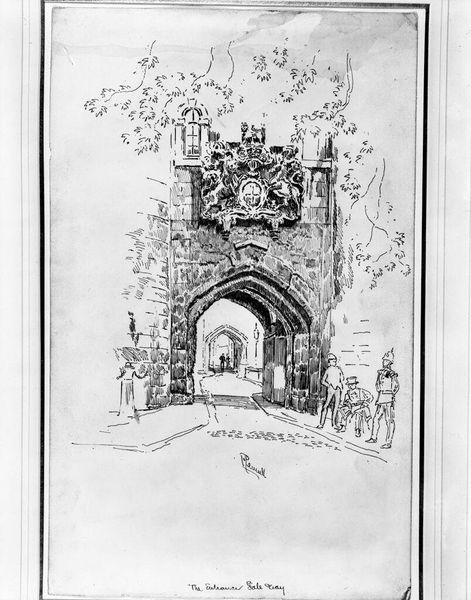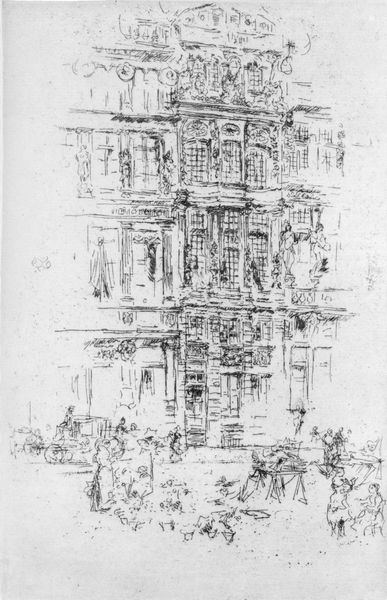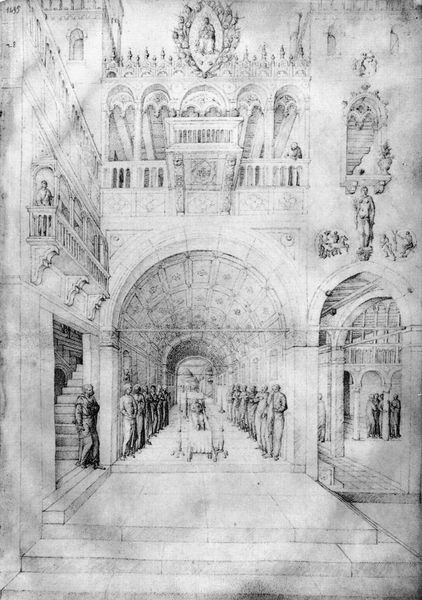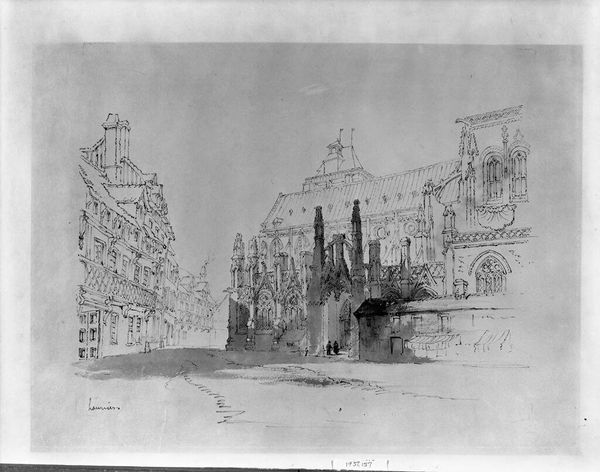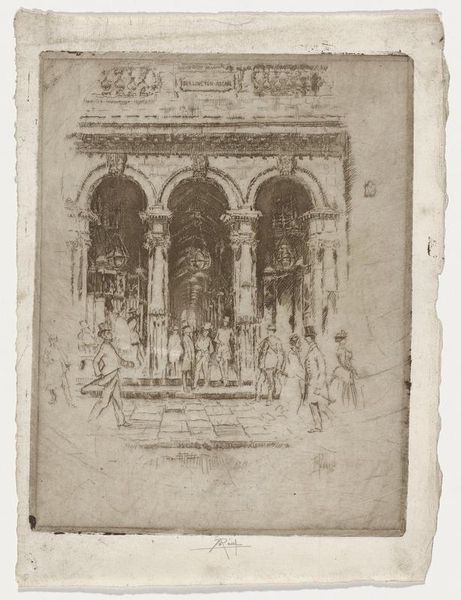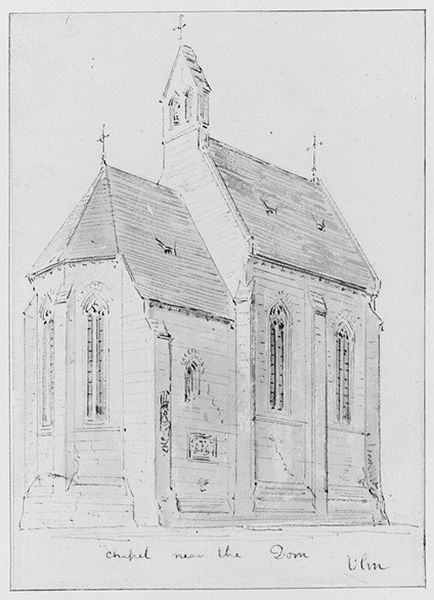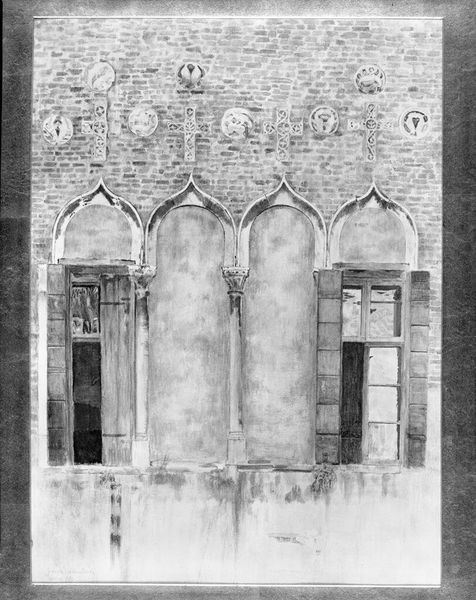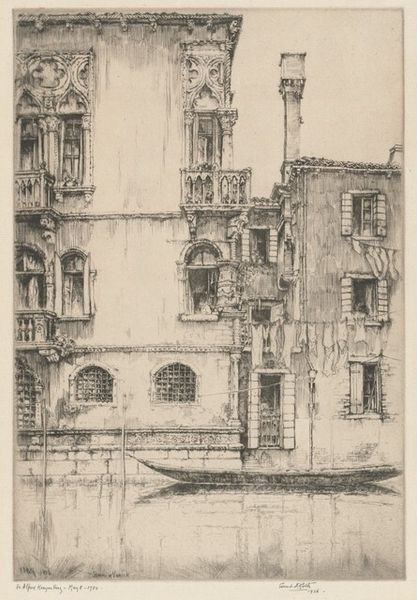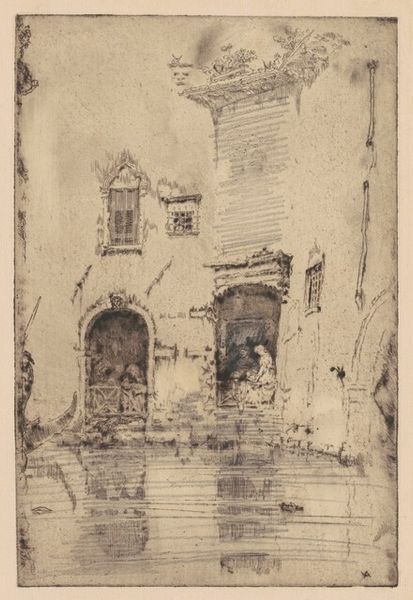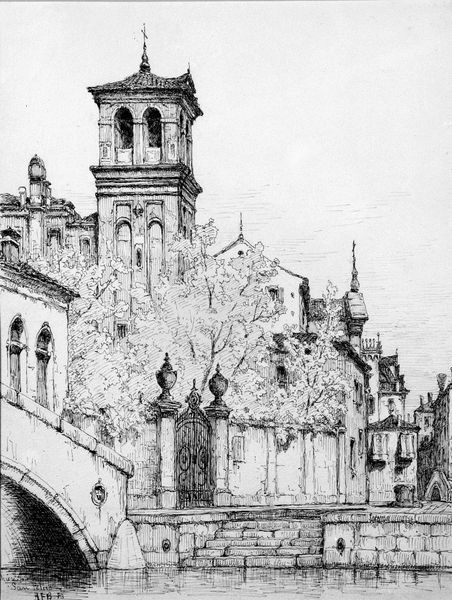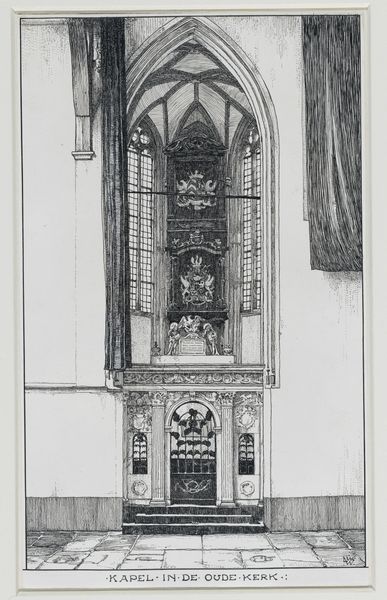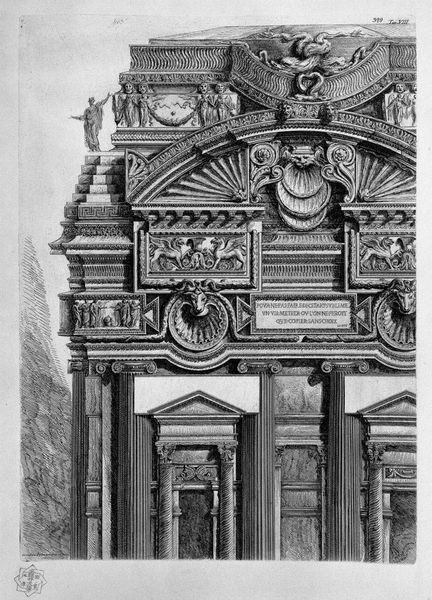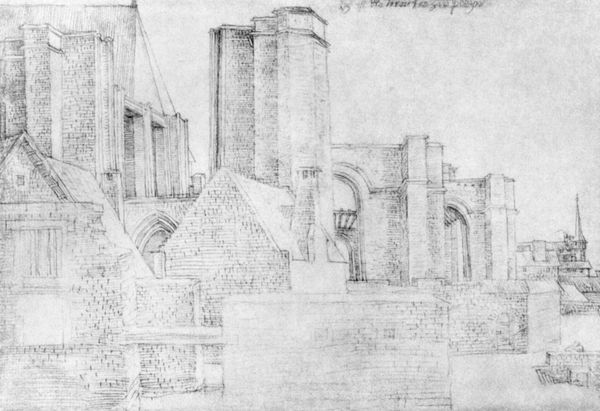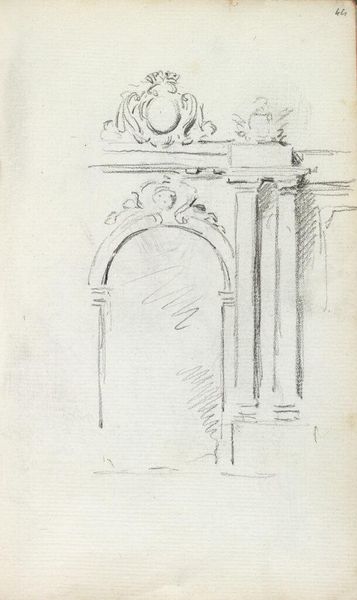
Dimensions: 19.8 x 29.3 cm
Copyright: Public domain
Curator: Here we have James Abbott McNeill Whistler's etching from 1880, "The Balcony," one of his Venetian scenes. What strikes you first about it? Editor: Immediately, it's the sketchiness, the rawness. You see the bones of the scene, the marks of the tool… it feels honest about its making. Curator: It’s a wonderful example of his Impressionistic style. The fluidity he achieves with etching is quite something. Do you think that apparent rawness reveals something about the materials? Editor: Absolutely. Etching allows for that directness, doesn’t it? It’s less about polished perfection and more about capturing a fleeting impression. The copper plate itself is a vehicle for this. How he uses the acid resist to create those subtle textures. It feels like he embraces the industrial process while bending it to his aesthetic will. Curator: I find it quite magical how he hints at form, suggests a detail, then lets the eye complete the picture. The Balcony appears to be, in many ways, almost dreamlike, though the balcony itself appears quite heavy with detail. Editor: Yes! The interplay between detail and deliberate omission. And it does make you wonder about the laborers involved, those craftspeople making the etching tools, preparing the copper plates, mixing the acids...all those hidden hands that facilitate Whistler's vision of Venice. He elevates craft, but always within a structured system of making. Curator: The entire scene does come alive—even with the minimal details. But as with most prints, there's always some amount of duplication here that slightly shifts the focus, doesn't it? How it changes across each impression? Editor: Right. Each pull from the plate will be subtly different, influenced by pressure, ink density, even the paper itself. Which adds another layer to that industrial yet handmade feel, blurring those boundaries again. Each print is an original, in its way. I leave feeling impressed with how deeply intertwined material processes are with an artist's sensibility and the creation of atmospheric depth.
Comments
No comments
Be the first to comment and join the conversation on the ultimate creative platform.
